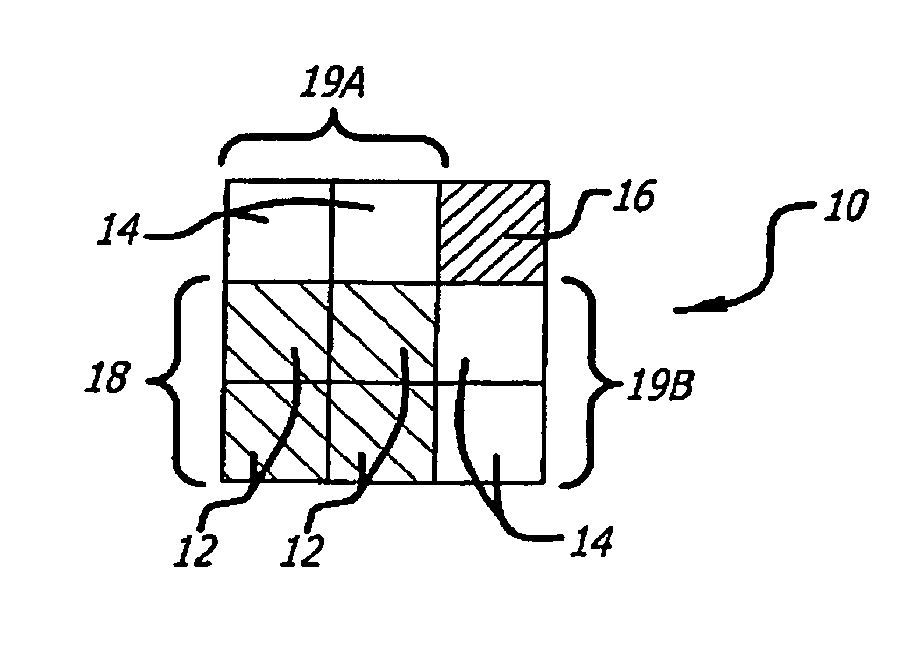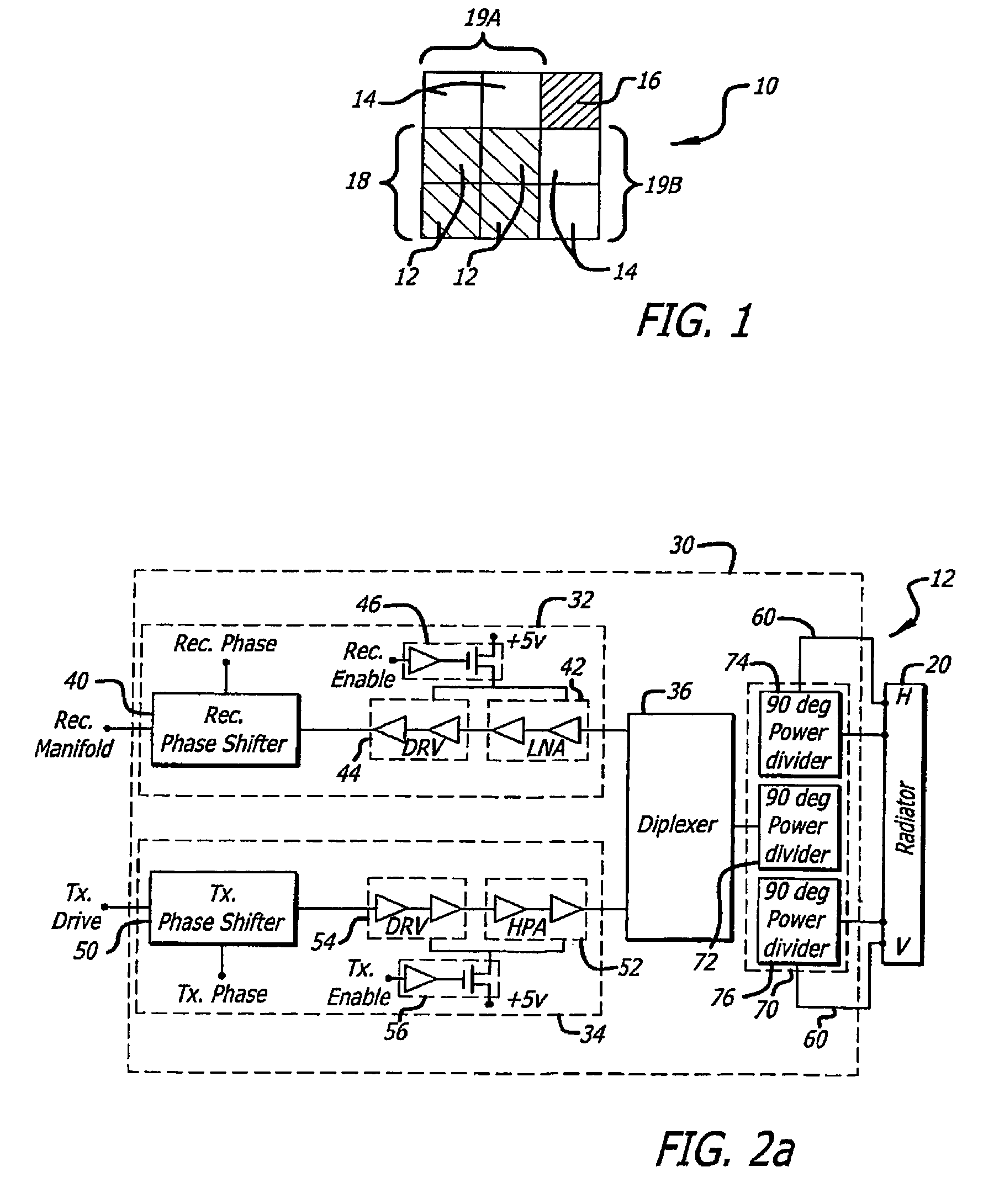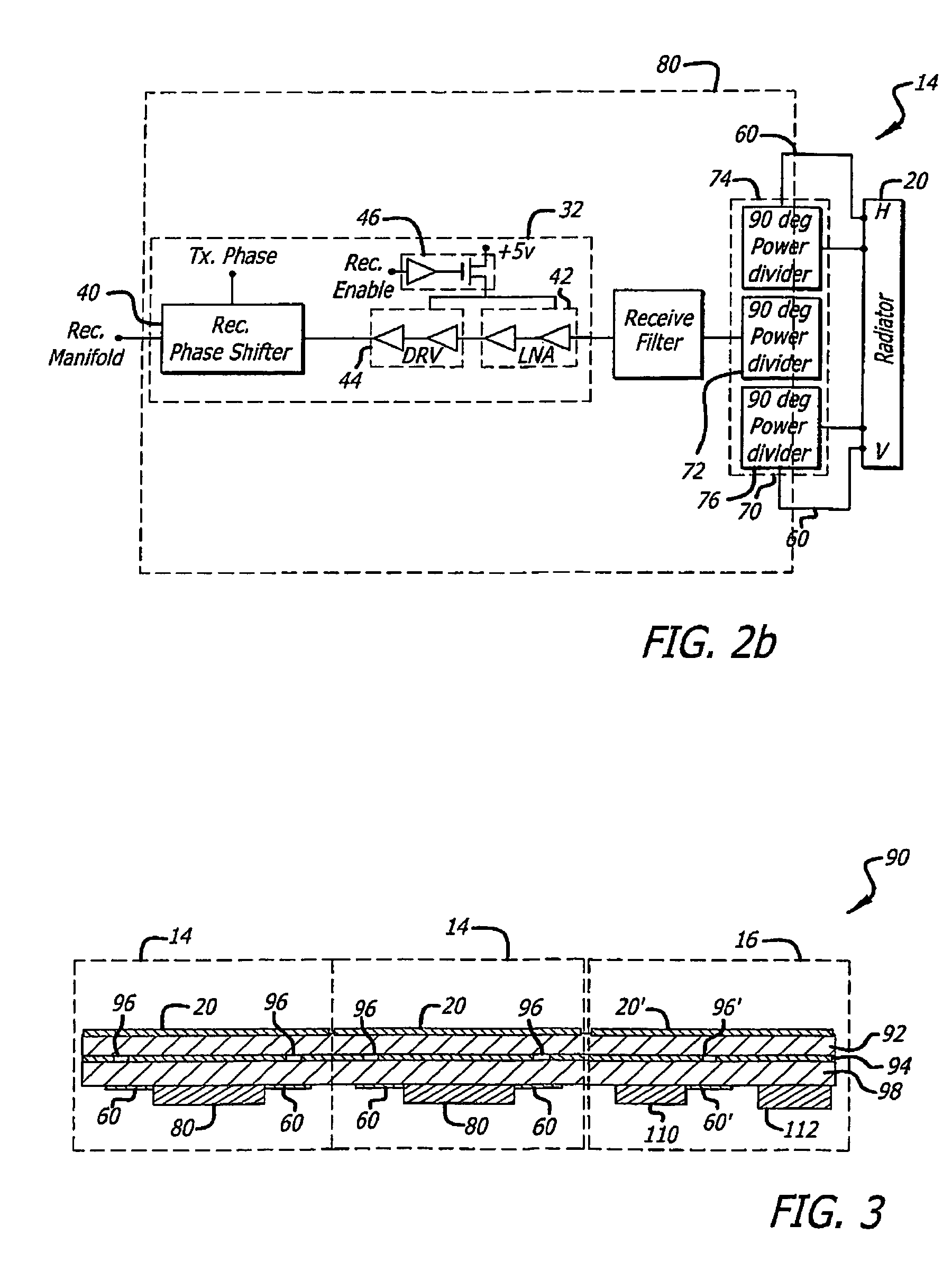Partitioned aperture array antenna
an array antenna and aperture technology, applied in the field of radio frequency electronics, can solve the problems of increasing the cost and complexity of the system, requiring significant time and expense for maintenance, and providing stability, so as to minimize the number of transmit circuits
- Summary
- Abstract
- Description
- Claims
- Application Information
AI Technical Summary
Benefits of technology
Problems solved by technology
Method used
Image
Examples
Embodiment Construction
[0017]Illustrative embodiments and exemplary applications will now be described with reference to the accompanying drawings to disclose the advantageous teachings of the present invention.
[0018]While the present invention is described herein with reference to illustrative embodiments for particular applications, it should be understood that the invention is not limited thereto. Those having ordinary skill in the art and access to the teachings provided herein will recognize additional modifications, applications, and embodiments within the scope thereof and additional fields in which the present invention would be of significant utility.
[0019]In a co-pending patent application entitled “ACTIVE ELECTRONICALLY SCANNED ARRAY ANTENNA FOR SATELLITE COMMUNICATIONS”, filed Oct. 22, 2008, by R. W. Nichols et al. Ser. No. 12 / 288,635, the teachings of which are incorporated herein by reference, an antenna for satellite communications is disclosed that uses an active electronically scanned arr...
PUM
 Login to View More
Login to View More Abstract
Description
Claims
Application Information
 Login to View More
Login to View More - R&D
- Intellectual Property
- Life Sciences
- Materials
- Tech Scout
- Unparalleled Data Quality
- Higher Quality Content
- 60% Fewer Hallucinations
Browse by: Latest US Patents, China's latest patents, Technical Efficacy Thesaurus, Application Domain, Technology Topic, Popular Technical Reports.
© 2025 PatSnap. All rights reserved.Legal|Privacy policy|Modern Slavery Act Transparency Statement|Sitemap|About US| Contact US: help@patsnap.com



